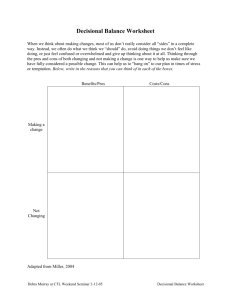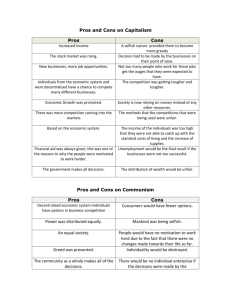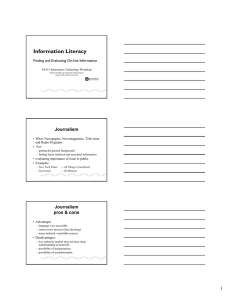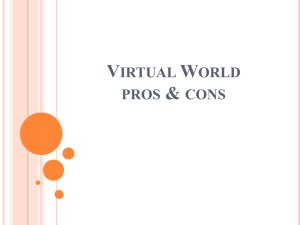Mass media - Fredericksburg City Public Schools
advertisement
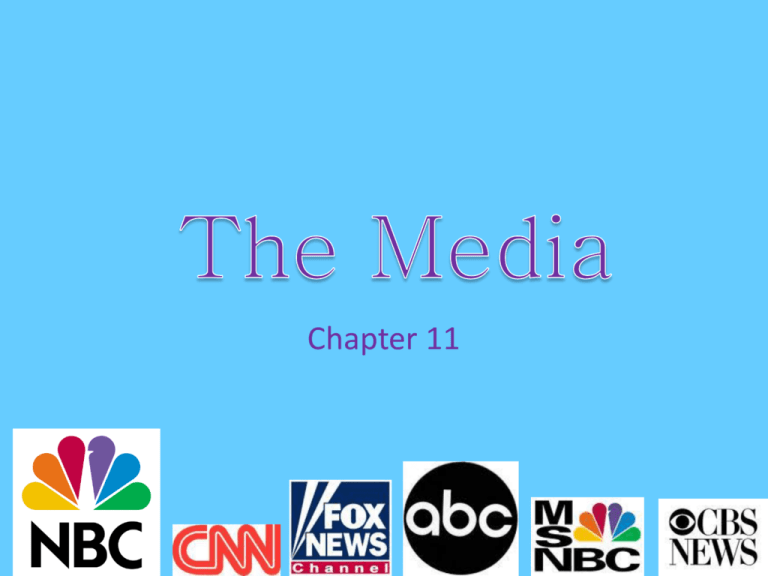
Chapter 11 Definitions • Mass media refers to the means for communicating to these audiences, which are commonly divided into two groups – Print media communicates information through the publication of words and pictures on paper. Daily newspapers, and popular magazines are two examples of this. – Broadcast (electronic) media communicates information electronically, through sounds and images. Radio and television are examples of this. Types of Mass Media • Television – Facts: 98% of households have TV's, and 80% of United States residents get their political information from them. – Pros: gets the message out quickly and to a large audience. – Cons: most programming is still from the four major networks (Fox, ABC, NBC, and CBS) • Newspaper – Facts: been around since the colonies, and have always been a form of political discussion. Also almost all localities in the U.S. have one. – Pros: more details than TV – Cons: circulation is dropping, TV and web are taking over, no more competition between papers. • Radio – Facts: 1940’s equivalent to television, and is still around today. – Pros: can go almost anywhere and everywhere. – Cons: most radio is music and entertainment now. Types of Mass Media (continued) • Internet – Facts: on pace to be like television, an abundant amount of information. – Pros: its quick, and gets the message to a large audience. – Cons: the validity of some information is hard to verify, and its culturally accessible. • Magazine – Facts: been here since the start and were originally were for purely political issues. – Pros: devoted to more details to certain stories – Cons: devoted more details to hobbies, entertainment, and lifestyles. Characteristics of Mass Media • Ownership-3 types – State/government run • China is the best example, lots of censorship. – Mixed Ownership • Government controlled but some private networks. – Ex. European Nations (BBC) – Private Ownership • Companies and corporations/private individuals own the media. – Ex. United States • Effects of Private Ownership – More Freedom – Make a Profit – News and entertainment become inter-connected – News worthiness-determined by audience appeal, the story or event appears or is important to the general public. • Government regulation – Some content regulation (limited by 1st amendment) • Regulated by FCC – Regulate airwaves by licensing (space) • NPR and PBS Characteristics of Mass Media (continued) • Bias – Gate-keeping/filtering-selecting what stories make the news. • Done by editors and producers • Profit influence – Yellow journalism/sensationalism • Stories that might not be very important but get your attention • Gives rise to audiences desire for INFO-TAINMENT – Issue framing • How issues are discussed can effect the outcome/perception. – Propaganda • A message crafted to show one side or only the favorable side of an issue. – Agenda-setting • Media telling us what is important and what is not. Government Use of the Media • Over time politicians have learned to use the media for their benefit. • Types: – Campaign coverage: mainly TV-focus on candidates not the issue. – “Leaks”: information is given out to gage public opinion to raise disagreement over policies. – Photo ops/media events: free coverage, and speeches. Media and Government/ Political Opinion • Over time media has created various effects that influence elections, legislation and public policy. • Types (effects): – Horse race journalism- campaigns and elections are reported on as a race because they focus on who is “ahead” – Yellow journalism/sensationalism- scandal, conspiracy, politicians personal life. – “Talking heads”- opinion leaders-people who viewers listen to or get their perspective on news. – 24-hour news-CNN-elections-daily coverage-legislation and government-mundane details. – Candidate focused coverage instead of issues. – “Sound bites”- 45 seconds or less of a condensed story – Institutional coverage- journalist are embedded in the three branches of government






